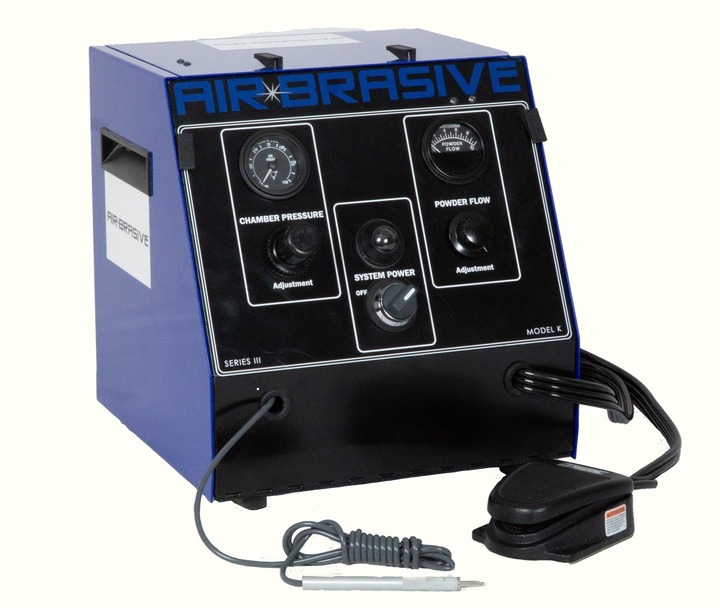Our Model K unit is one of the most popular in the product line. It is ideal for lab use or pilot production research.
Description
Features
- Patented vibratory feed system for uniform media flow
- Low cost, high reliability
- Instant accessibility to internal components
- Pinch valve shutoff
- Long life fittings at critical wear points
The Airbrasive Model K gives high volume producers the ability to micro-blast parts on production lines or in labs. This sturdy machine has been designed to accommodate both intermittent or continuous operations. Powder flow lines are reinforced with tungsten carbide fittings for the utmost reliability in a continuous operation. It utilizes our patented vibratory feed for uniform powder flow.
Powder flow is adjusted via our powder flow and pressure controls on the front panel. Added to this machine is an auxiliary powder chamber monitored for powder level. Once it falls below a certain level, an indicator light tells the operator to fill the auxiliary chamber with powder. This guarantees consistent powder flow for continuous operation.
Specifications
- Voltage: 110V, 60Hz or 220V, 50Hz
- Current: 1 amp
- Pressure: Up to 140 psig
- Minimum line press: 50 psig
- Air Supply: 5 scfm (2.4 L/sec)
- Chamber Capacity: 1.5 lbs. (680 gr) of powder
- Powder Flow: Up to 40 grams/min
- Orifice plate: 4 holes x 26 mil dia. (0.7mm)
- Relief Valve Setting: 140 psig (9.8 kg/sq.cm)
- Dimensions (H x W x D): 13″ x 12″ x 12″ (33.0 cm x 30.5 cm x 30.5 cm)
- Weight: 33 lbs. (15 kg)
Accessories
Standard Accessories
- Power Cord
- Air Supply Hose (5 ft)
- Nozzle (0.18” ID, straight)
- Nozzle (0.18” ID, right angle)
- AccuBRADE 27 Aluminum Oxide Powder (27 micron, 4 LBS)
- AccuBRADE 50 Aluminum Oxide Powder (50 micron, 4 LBS)
- Powder Chamber Bolt Hex Wrench and Powder Funnel
Recommended Accessories
- Work Chamber, 110V or 220V
- Dust Collector, bag type or cartridge type, ¾ HP, 110V or 220V
- Air / Oil Filter



